Residents around Saul Kere woke up to a rude shock one December morning last year. A flex banner, with the former Mahadevapura MLA Arvind Limbavalli’s face, had been put up at the entrance to the lake, announcing its development.
The lake would be drained, desilted and developed by the BBMP. The banner welcomed residents to attend the inauguration of the lake’s development by Arvind Limbavalli on December 12th. A group of concerned birdwatchers turned up at the lake on the designated day to ask the MLA and BBMP about their plans. But nobody showed up.
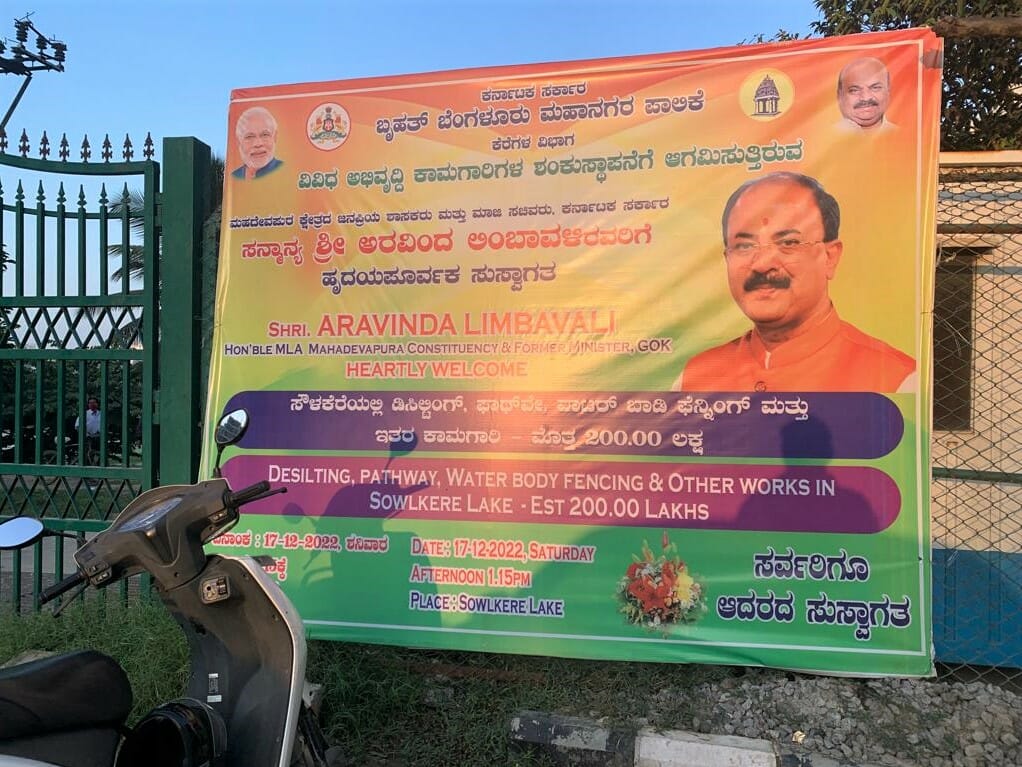
Instead, the banner was quickly removed, and the lake drained without any ceremony. Five months later, birdwatchers, nature lovers and residents are still waiting to understand exactly what the BBMP has in store for the lake.
Birdwatchers are concerned that the lake will turn into a soup bowl-shaped, lifeless water body that would look pretty, but have no ecological value.
A birders’ paradise
Saul Kere is a 61 acre water body located in Bellandur; the lake is part of the Varthur lake series. The lake is surrounded by tech parks and major IT companies. Over the years, birdwatchers and naturalists have documented over 200 species of birds at the lake, including several migrants from Central Asia and Siberia.
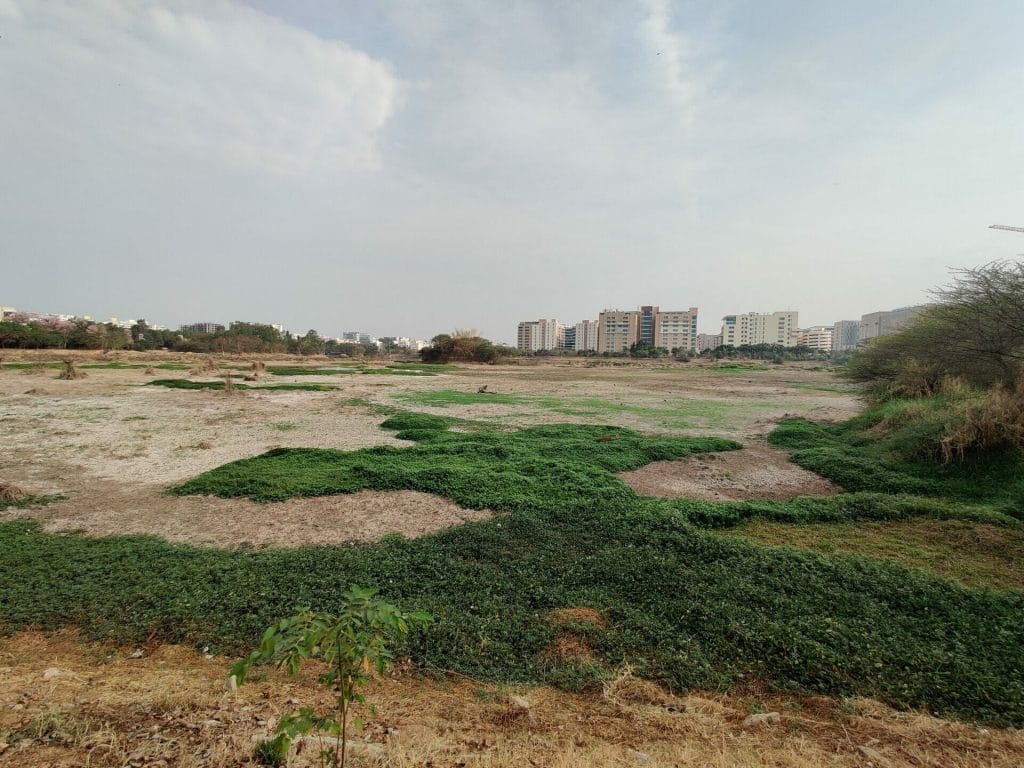
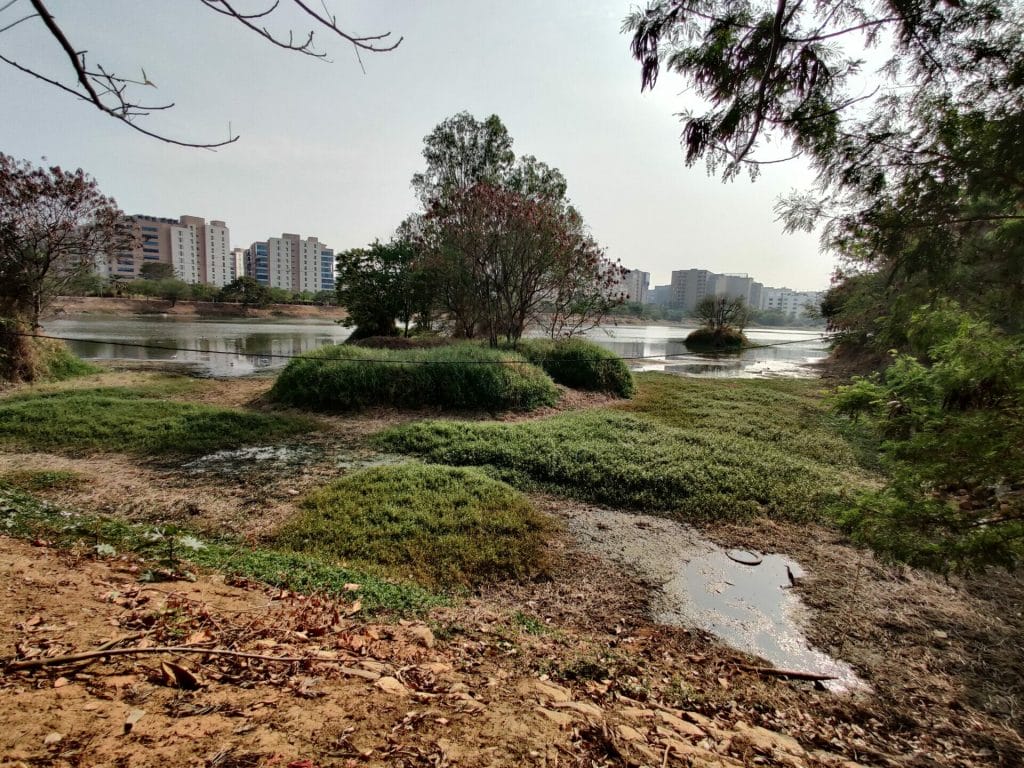
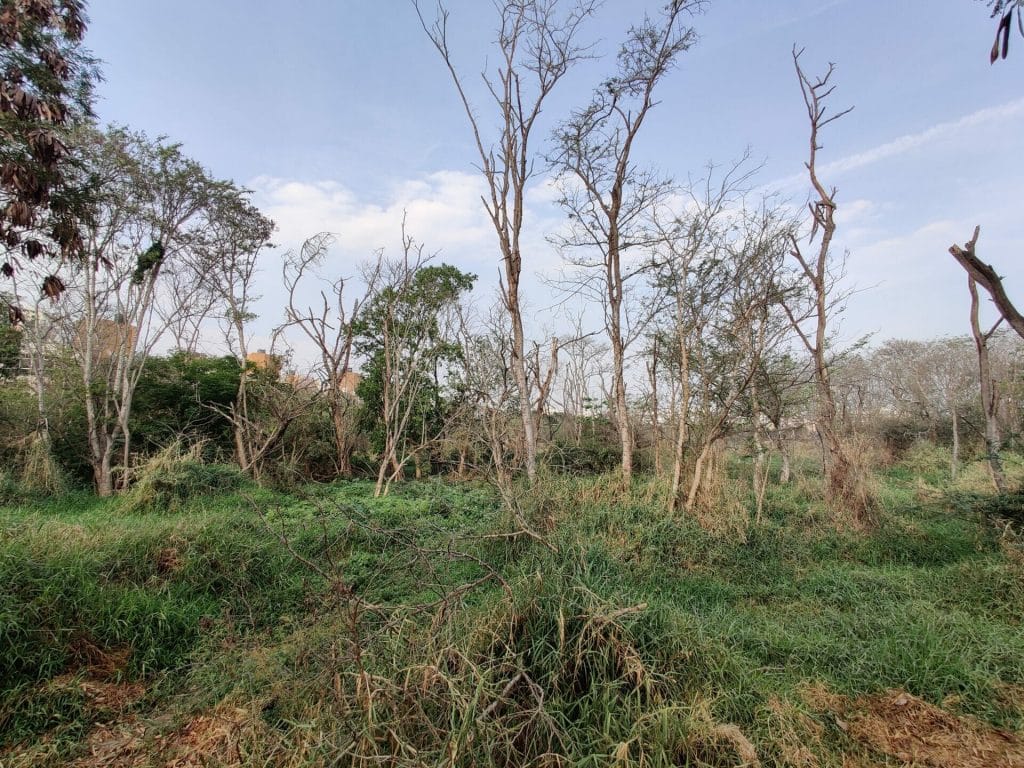
The lake’s bird diversity is largely due to the variation in its habitat, explains Bijoy Venugopal, a bird watcher and frequent visitor to the lake. Saul Kere has shallow, swampy habitats ideal for shorebirds or waders like the Greater Painted Snipe and Baillon’s Crake. It has patches of woodland around the periphery, which attracts small arboreal insectivorous birds like the Red-breasted Flycatcher and Tickell’s Blue Flycatcher.
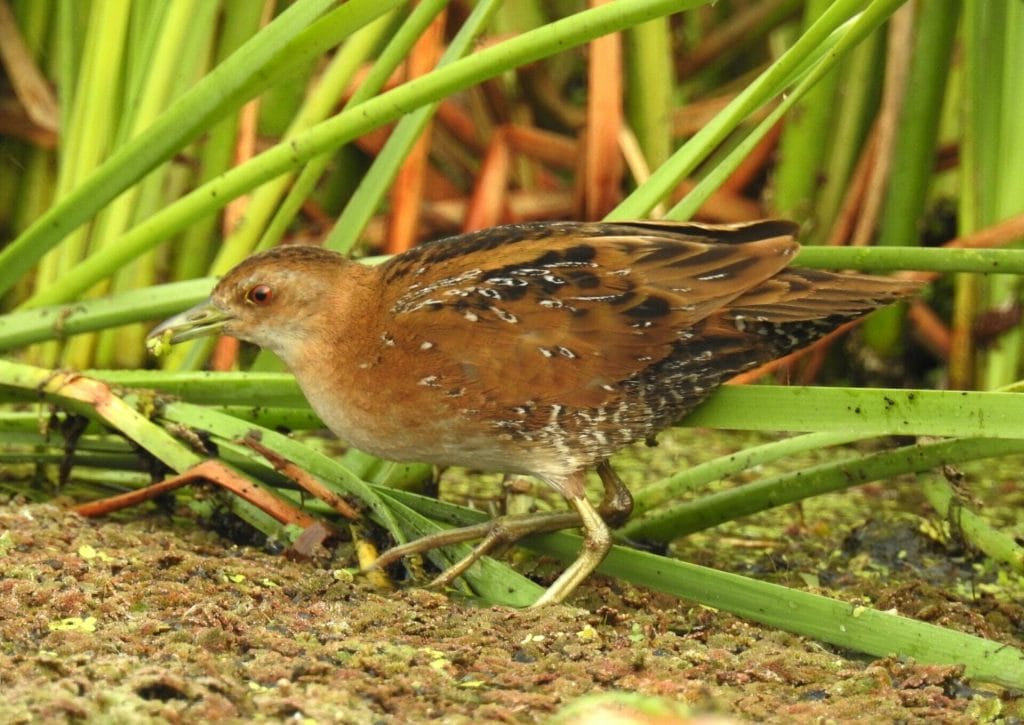
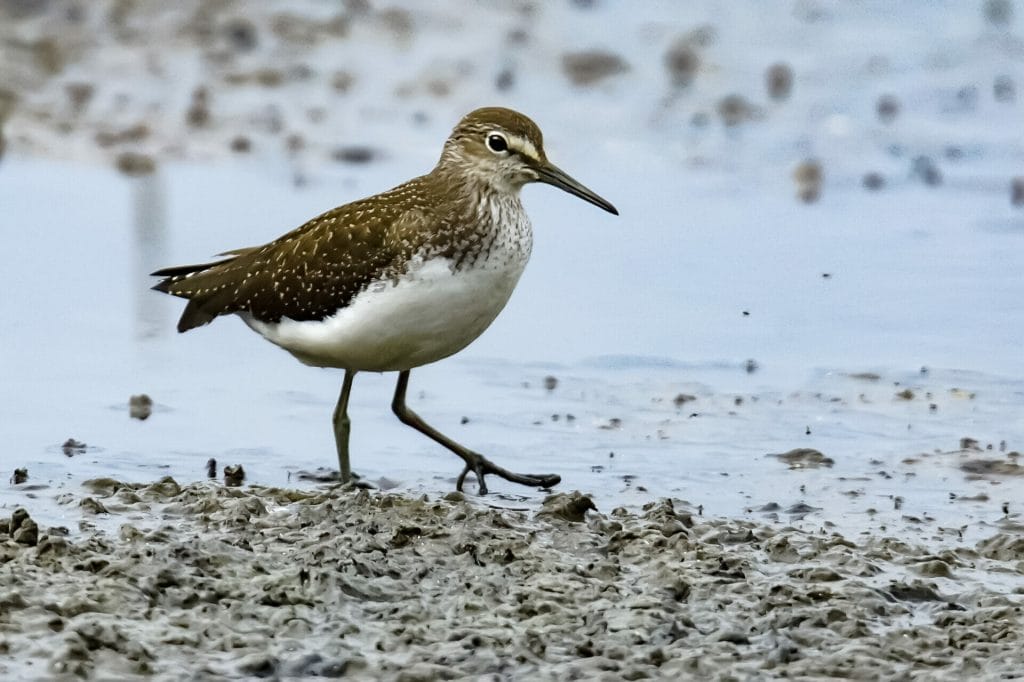
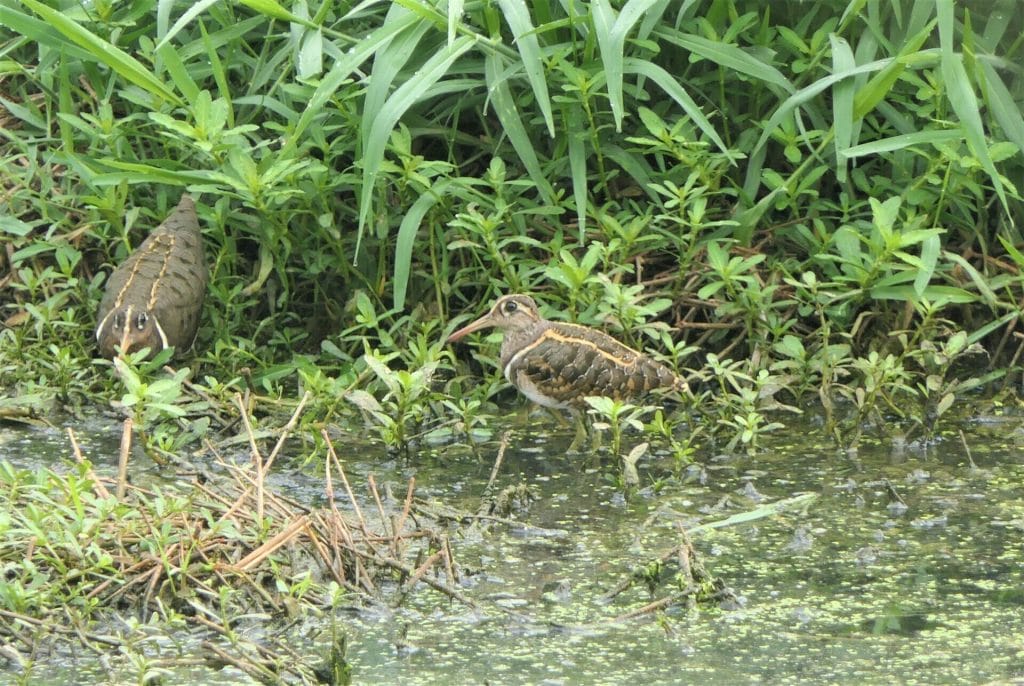

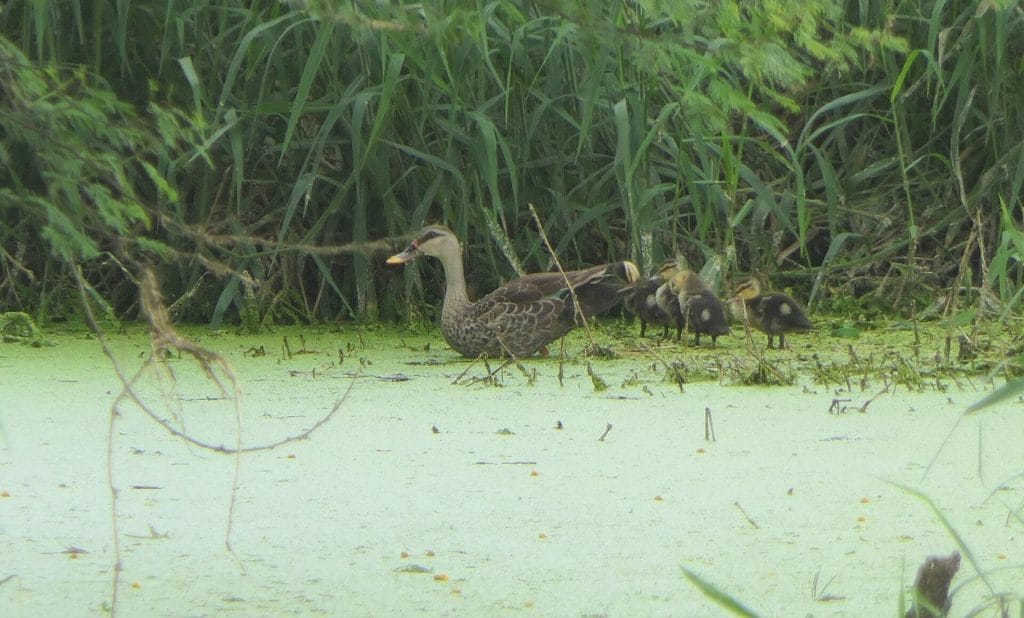
Although he travels across the country birdwatching, for Bijoy, Saul Kere which is in his backyard has a special place. He began regularly visiting the lake during the COVID-19 lockdowns. “It got me through the pandemic,” he says. Birders like him fear the lake development work because of BBMP’s poor track record.
A history of haphazard restoration
Lake development work happening in the city typically follows a two phase plan, according to the BBMP Chief Engineer for lakes. Phase 1 includes BBMP desilting, bund formation, sewage diversion and fencing. Phase 2 has works like pathway improvements.
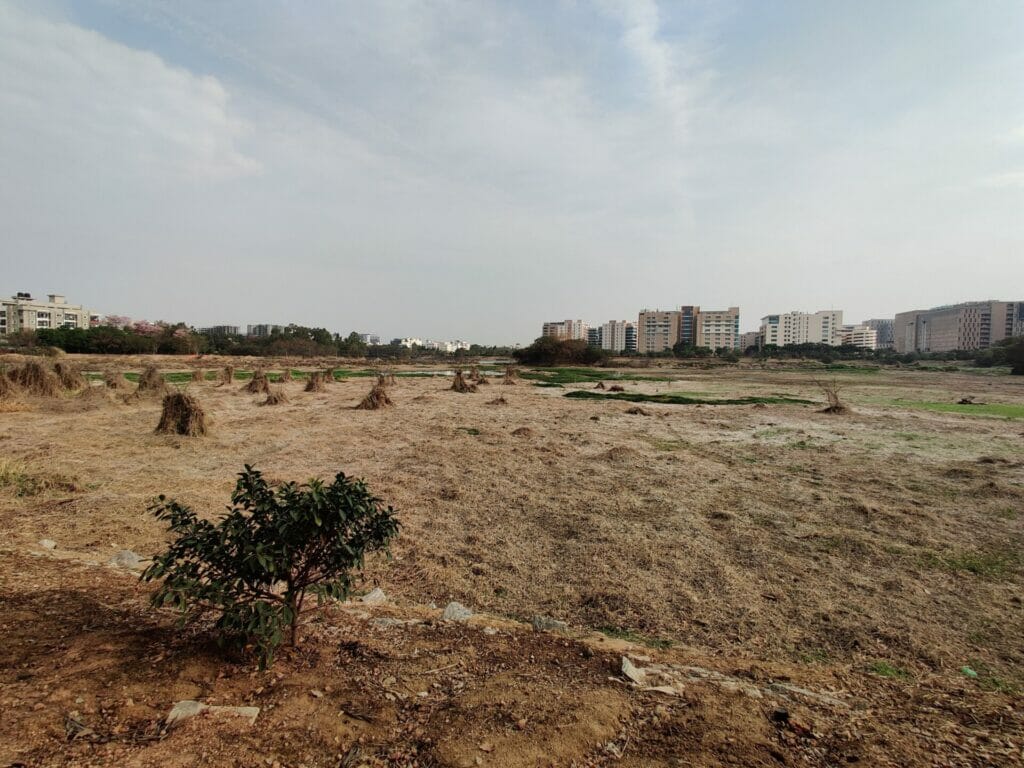
While the lake was set for development in 2019 under the Nava Nagarothana scheme, work only began in January.
Arvind Limbavalli’s poster suggests the timing was related to the elections. But Saul Kere was also one of the lakes that overflowed during the floods last year. Several lake activists and experts suggested that the flooding happened because the lake’s water holding capacity had been reduced.
BBMP officials were said to be anxious to develop the lake to prevent flooding. They decided to desilt the lake and deepen it to improve water holding capacity.
But Bijoy and other birders fear that deepening the lake would result in a uniform soup bowl shape. All the shallow swamps and reed beds would be destroyed; most bird species found in the lake depend on these shallow habitats.
Ramprasad, convenor of the Friends of Lakes group, says these fears are not baseless. Several lakes that have been developed around the city have a soup bowl shape. Lakes like Agara and Madiwala, which were once a haven for birds, are now seeing a decline in bird diversity because shallow habitats have disappeared.
Ideally, Ramprasad says, lake development plans should include a gradual slope and depth. “But this requires an understanding of ecology and not just civil engineering,” he says. Such expertise is sorely missing in both the BBMP and Karnataka Tank Conservation Development Authority (KTCDA). KTCDA is the final authority on all lake restoration plans.

Read more: Lake development: Politicians seek publicity, but leave the public clueless
A bird-friendly plan
In Saul Kere, birdwatching groups have stepped in to make this plan for the BBMP.
The recommendations include maintaining a graduated shoreline and shallow habitats around the lake. Birders recommended that a shallow swampy habitat, currently formed because of sewage, be created but with sewage free water and wetland vegetation. This is an important habitat for wading birds like Greater Painted Snipes, says Bijoy.
They also recommend creating mud bunds, such materials allow habitat for burrowing insects and birds like kingfishers, which nest in cavities in mud banks. And not disturbing trees and vegetation around the edges, which are habitat for arboreal birds. The full list of recommendations can be seen here.

These recommendations have been shared with the BBMP, by the lake group MAPSAS.
But a trustee from the group also pointed out that there was no guarantee that BBMP would accept these recommendations. As the final development plan is not public, there is no way to know until the work happens.
BBMP Mahadevapura zone Assistant Engineer, Sapna declined to discuss specific recommendations. She said that MAPSAS had been fully consulted and informed every step of the way and that the KTCDA had approved the plan.
Much to their dismay, the BBMP appointed contractor also cut down some small trees and vegetation around the edges, to create pathways for earthmovers.
In the meantime, several aspects of the lake that should be fixed do not appear to be in the pipeline.
Read more: Saul Kere project must be redesigned to be bird-friendly
A plethora of problems
During the floods, BBMP broke down the wall of a school adjacent to the lake, to allow flood waters to recede from the school and flow into the lake. Eight months have passed, but the construction debris has still not been removed.
Even as BBMP struggles to manage existing encroachment, there are buildings even within the lake’s buffer zone.
A river of sewage flows into the lake. Although, a new STP is being constructed at the lake, BBMP is simply not able to prevent the river of raw sewage flowing into the lake. Bhavana, another concerned birdwatcher, suggests that the agency needs to tackle the sewage problem at the source. “So many new buildings are being constructed around the lake. Sewage from there will create an additional burden,” she says.
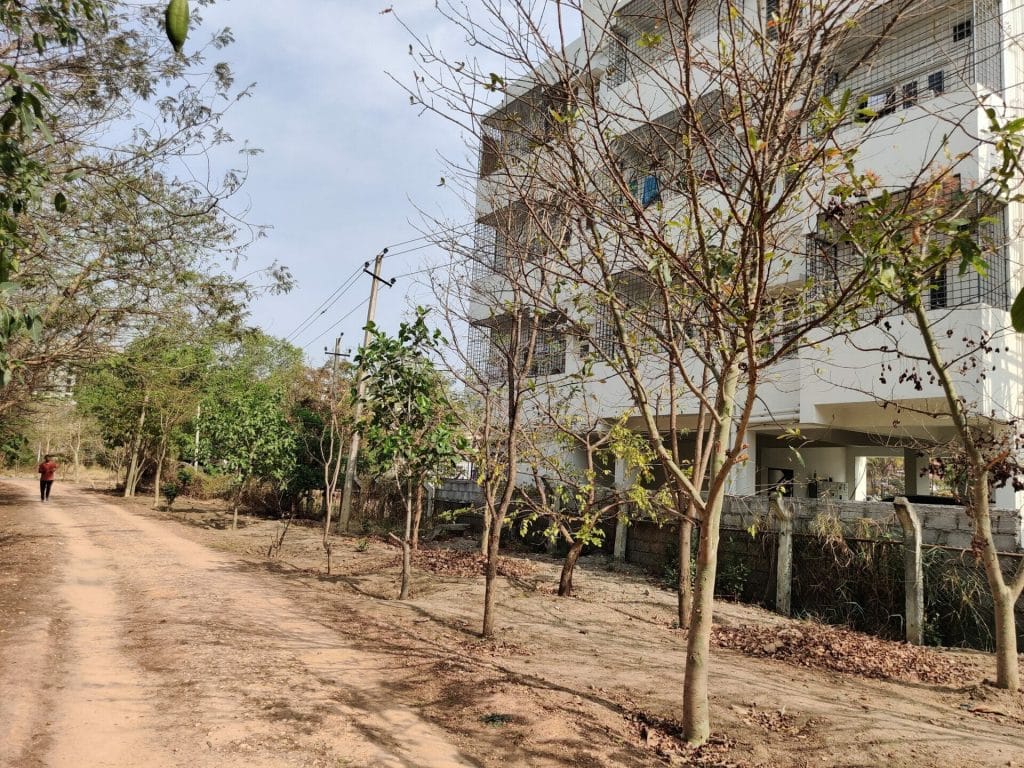
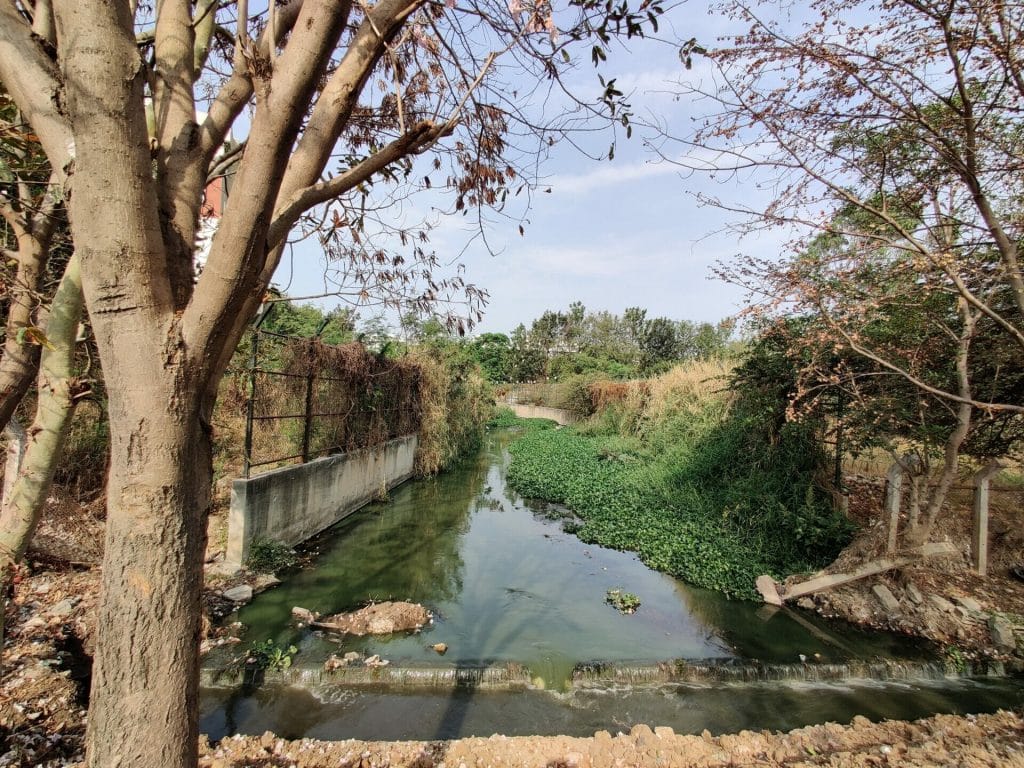
While large apartment societies and gated communities are expected to manage sewage, Bijoy suggests that small and medium-sized apartment buildings should also be treating sewage water at source, to prevent pollution at the lake.
Sapna assured me that the sewage would be diverted. But raw sewage is flowing into the lake with renewed vigour after the two days of thunderstorms this month. I was unable to reach Sapna for a comment on this issue.
For Bijoy and so many birdwatchers like him, every new issue brings a renewed sense of panic and frustration. “Currently, we try to stay in touch with the contractor and monitor what is happening every day,” says Bijoy. “But it is tough. We all have jobs, and we can only come into the lake short periods of time.”
They continue because, as Bijoy puts it, somebody has to speak for birds and other wildlife that don’t have a vote.
The place surrounding the lake is where sewage flows.
Encroachments , not adhering to buffer zone from the Lake there are clear defaulters
One side is where all the IT parks ECOSPACE, ECOWORLD, PRITECH,…are present